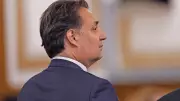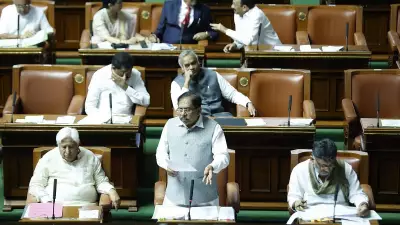Politics
3 Naxalites, Including Woman, Killed in Sukma Encounter with Security Forces
A woman among three Naxalites was killed in an encounter with security forces in Chhattisgarh's Sukma district on December 18. Police confirm the operation was based on specific intelligence.
Business
DDA Opens Asita Park Lawns for Events: Daily Rentals from Rs 40,000 to Rs 3.3 Lakh
Delhi Development Authority opens Asita Park lawns near ITO for socio-cultural events. Daily rental charges range from Rs 40,000 to Rs 3.3 lakh. Read details on guidelines and booking.
World
Cyclone Ditwah Ravages 50,000 Hectares of Crops in Tamil Nadu's Cauvery Delta
Cyclone Ditwah caused severe damage to paddy crops across Trichy and Cauvery delta districts. Over 1.2 lakh acres affected, with farmers facing huge losses. Govt announces relief.
Entertainment
Brad Pitt Wins Legal Round Against Angelina Jolie in $35M Winery Battle
A Los Angeles judge orders Angelina Jolie to hand over secret emails in the Chateau Miraval dispute. Pitt seeks $35 million in damages. Read the latest twist in this Hollywood saga.
Lifestyle
Health
Kolkata seeks police aid to curb leaf burning, improve air
Kolkata Municipal Corporation asks police to monitor dry leaf burning worsening city's air quality. Mayor details smog-fighting measures but admits resource shortage. Read more.
Haryana Health Dept: 5,384 Posts Vacant, Rural Areas Hit Hard
Haryana faces a severe healthcare staff shortage with 5,384 vacant posts. While the govt claims alternative arrangements, gaps in rural delivery raise concerns. Read the full district-wise breakdown.
PGI Chandigarh Again Named Best Health Tech Institute in India
Postgraduate Institute of Medical Education and Research (PGIMER), Chandigarh, has been ranked India's best institute for health technology assessment for 2023-24. Discover the details of this prestigious recognition.
Gurgaon Air Quality Poor, Deterioration Forecast
Gurgaon's air quality remained poor with AQI 276. Safar predicts a drop to 'very poor' or 'severe' levels soon. Experts advise limiting outdoor activities. Read more for station-wise data and safety tips.
Karnataka Assembly Passes Key Amendment to Medical Bill
Karnataka's new bill allows private hospitals and clinics to start with a 6-month provisional registration, bypassing initial inspection. Learn about the key changes and their impact.
Technology
Get Updates
Subscribe to our newsletter to receive the latest updates in your inbox!
We hate spammers and never send spam










































